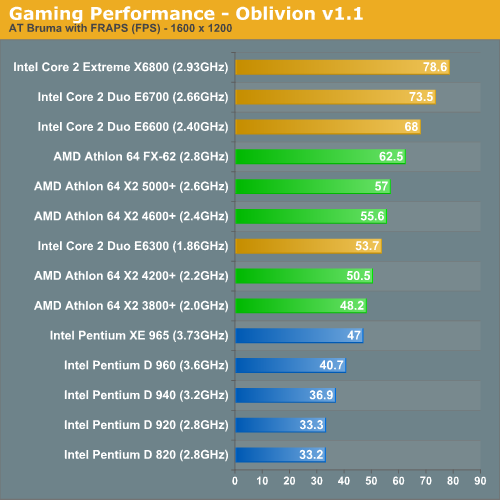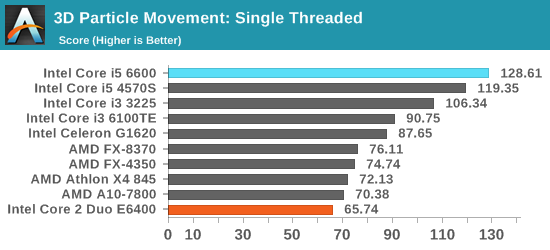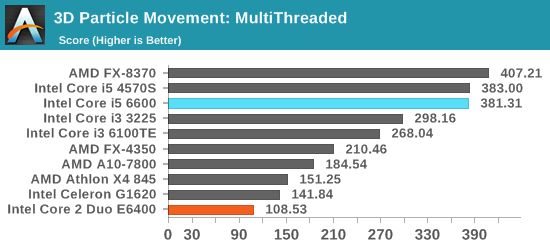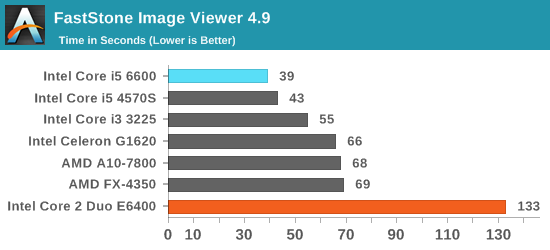Ten Year Anniversary of Core 2 Duo and Conroe: Moore’s Law is Dead, Long Live Moore’s Law
by Ian Cutress on July 27, 2016 10:30 AM EST- Posted in
- CPUs
- Intel
- Core 2 Duo
- Conroe
- ITRS
- Nostalgia
- Time To Upgrade
Core: Performance vs. Today
Looking back at Anand’s original review, and at a time where CPU performance made a lot of difference for gaming frame rates at 1600x1200, the conclusion was quite startling.
Intel's Core 2 Extreme X6800 didn't lose a single benchmark in our comparison; not a single one. In many cases, the $183 Core 2 Duo E6300 actually outperformed Intel's previous champ: the Pentium Extreme Edition 965. In one day, Intel has made its entire Pentium D lineup of processors obsolete.

Imagine something like that happening today. (Actually, if you believe what we’ve been told, AMD’s upcoming AM4 platform with Zen and Bristol Ridge might make its current desktop platform obsolete, but that’s a slightly different discussion because of how integrated graphics has adjusted the landscape for CPU focused silicon somewhat.)
That’s Intel vs. Intel though, against AMD it was just as damning.
Compared to AMD's Athlon 64 X2 the situation gets a lot more competitive, but AMD still doesn't stand a chance. The Core 2 Extreme X6800, Core 2 Duo E6700 and E6600 were pretty consistently in the top 3 or 4 spots in each benchmark, with the E6600 offering better performance than AMD's FX-62 flagship in the vast majority of benchmarks.
However, Core 2 Duo has now been out for 10 years. I’ve pulled up some benchmark data from our database to see if we have any matches to compare against processors that cost $214 today. The Core i5-6600 fits our bill perfectly, and there are two benchmarks which match up. I’ve also dotted the graphs with a range of more recent AMD and Intel processors for progression.



Our 3D Particle Movement is more for idealized synthetic workloads, however FastStone is all about image conversion and favors high frequency, high single threaded performance.
Naturally, modern processors nearing 4.00 GHz have a large advantage over the 2.13 GHz version of Core 2 Duo, as well as multiple generations of improved microarchitecture designs and smaller lithography nodes for power efficiency. However, has any processor family had as much nostalgic longevity as the consumer launch of Core? One could argue that while Core put Intel on top of the heap again, Sandy Bridge was a more important shift in design and as a result, many users went from Conroe to Sandy Bridge and have stayed there.










158 Comments
View All Comments
patel21 - Thursday, July 28, 2016 - link
Me Q6600 ;-)nathanddrews - Thursday, July 28, 2016 - link
Me too! Great chip!Notmyusualid - Thursday, July 28, 2016 - link
Had my G0 stepping just as soon as it dropped.Coming from a high freq Netburst, I was thrown back, by the difference.
Since then I've bought Xtreme version processors... Until now, its been money well spent.
KLC - Thursday, July 28, 2016 - link
Me too.rarson - Thursday, August 4, 2016 - link
I built my current PC back in 2007 using a Pentium Dual Core E2160 (the $65 bang for the buck king), which easily overclocked to 3 GHz, in an Abit IP35 Pro. Several years ago I replaced the Pentium with a C2D E8600. I'm still using it today. (I had the Q9550 in there for a while, but the Abit board was extremely finnicky with it and I found that the E8600 was a much better overclocker.)paffinity - Wednesday, July 27, 2016 - link
Merom architecture was good architecture.CajunArson - Wednesday, July 27, 2016 - link
To quote Gross Pointe Blank: Ten years man!! TEN YEARS!guidryp - Wednesday, July 27, 2016 - link
Too bad you didn't test something with a bit more clock speed.So you have ~2GHz vs ~4GHz and it's half as fast on single threaded...
Ranger1065 - Wednesday, July 27, 2016 - link
I owned the E6600 and my Q6600 system from around 2008 is still running. Thanks for an interesting and nostalgic read :)Beany2013 - Wednesday, July 27, 2016 - link
Built a Q6600 rig for a mate just as they were going EOL and were getting cheap. It's still trucking, although I suspect the memory bus is getting flaky. Time for a rebuild, methinks.And a monster NAS to store the likely hundreds of thousands of photos she's processed on it and which are stuck around on multiple USB HDDs in her basement.
It's not just CPUs that have moved on - who'd have thought ten years ago that a *good* four bay NAS that can do virtualisation would be a thing you could get for under £350/$500 (QNAP TS451) without disks? Hell, you could barely build even a budget desktop machine (just the tower, no monitor etc) for that back then.
God I feel old.